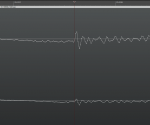Gloopikat
New member
Hello everyone, glad to be posting here for the first time!
What's your take on stereo-widening sustained drum sounds, like white noise snares? I can't post a link, as it's my first post, but I'm specifically talking about the track Gravity Well - Max Cooper (Microtrauma Remix). I think I hear two slightly different frequencies on either side, but maybe one side is slightly offset...?
I've passed the stage of trying to use delays as sends to try and offset the wet signal, panning to one side (while panning the original to the other), as that clearly doesn't work for repeating sounds and the whole thing is a phasing mess when mixing in mono. Also, Reason 4 (I sketch here) doesn't have a phase-flipping feature, so I'm not going down the route of flipping + offsetting either.
I could re-import a copy as a phase-flipped sample, but that wouldn't do, because I use a synth to automate the snare's envelopes. So, any ideas on which tricks were used in that track, or techniques you use, would be much appreciated. Thank you for your time!
What's your take on stereo-widening sustained drum sounds, like white noise snares? I can't post a link, as it's my first post, but I'm specifically talking about the track Gravity Well - Max Cooper (Microtrauma Remix). I think I hear two slightly different frequencies on either side, but maybe one side is slightly offset...?
I've passed the stage of trying to use delays as sends to try and offset the wet signal, panning to one side (while panning the original to the other), as that clearly doesn't work for repeating sounds and the whole thing is a phasing mess when mixing in mono. Also, Reason 4 (I sketch here) doesn't have a phase-flipping feature, so I'm not going down the route of flipping + offsetting either.
I could re-import a copy as a phase-flipped sample, but that wouldn't do, because I use a synth to automate the snare's envelopes. So, any ideas on which tricks were used in that track, or techniques you use, would be much appreciated. Thank you for your time!

 In any case, I had hoped that someone would listen to the link I provided and tell me how they would go about that specific snare, instead of all of us guessing what the other one means. Once again, thanks for your replies.
In any case, I had hoped that someone would listen to the link I provided and tell me how they would go about that specific snare, instead of all of us guessing what the other one means. Once again, thanks for your replies.

